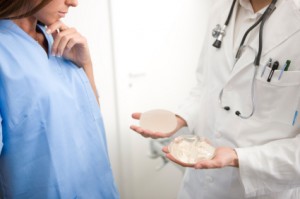History of Silicone Breast Implants
 According to the American Society of Plastic Surgeon’s, there were over 300,000 breast augmentation procedures performed in the US in 2011. It’s no surprise, then, that breast enhancement surgery is the most popular plastic surgery procedure. Despite the procedure’s popularity, few know about its origin. Since this year marks the 50th anniversary of silicone breast implants, Dr. Franklyn Elliott would like to take you through a brief history of their evolution.
According to the American Society of Plastic Surgeon’s, there were over 300,000 breast augmentation procedures performed in the US in 2011. It’s no surprise, then, that breast enhancement surgery is the most popular plastic surgery procedure. Despite the procedure’s popularity, few know about its origin. Since this year marks the 50th anniversary of silicone breast implants, Dr. Franklyn Elliott would like to take you through a brief history of their evolution.
Beginning in the 1940s, Japanese women began having their breasts injected with materials like paraffin wax, sponges, and non-medical grade silicone to enlarge their breast size. This method for breast enhancement not only posed increased health risks, but produced undesirable results. Since the injected material wasn’t placed in any type of shell, it had the tendency to migrate, bunch up, and sometimes cause rock-hard lumps. In the 1960s, two plastic surgeons from Texas, Drs. Frank Gerow and Thomas Cronin, had a new idea to encase the filler material inside a silicone shell before placing it inside the breasts and produced the very first silicone breast implants.
Once the silicone breast implants were developed, the Texas surgeons needed to try their new device on someone. In 1962, Timmie Jean Lindsey received the first silicone breast implants. When she first met Dr. Gerow, Lindsey was seeking tattoo removal via dermabrasion. At one of her follow-up appointments, Dr. Gerow suggested Lindsey try silicone breast implants to correct sagging breasts. Lindsey was more concerned with her protruding ears than sagging breasts, so she agreed to have breast augmentation surgery as long as Dr. Gerow would also perform otoplasty, or ear surgery.
Although she wasn’t originally sold on the idea of having breast surgery and didn’t tell anyone about her procedure for over 30 years, Lindsey did notice increased attention after her procedure. While Lindsey helped pave the way for millions of other women, her journey has been bumpy. Ten years after her procedure, Lindsey began experiencing complications like capsular contracture. Nowadays, women who experience such complications typically receive breast revision surgery to remove and/or exchange their implants, but Lindsey chose not to have additional surgery. In fact, she still has her original breast implants from 1962. However, it’s important to understand that she is quite an exception and breast implants are not intended to be lifetime devices.
Like Lindsey, silicone breast implants have had some bumps along the way as well. In 1976, Congress passed a law that required medical devices, such as breast implants, to be reviewed by the FDA for safety. After a growing number of complaints about leakage from silicone implant patients, they were pulled from the market in 1992; making saline breast implants the only option for breast enhancement. Breast implant manufacturers worked for 14 years to redesign silicone breast implants to increase safety, and the FDA-approved silicone gel breast implants were placed back on the market in 2006.
Plastic surgeons are always refining plastic surgery techniques and improving devices, and Dr. Elliott works to ensure patient safety while providing exceptional results. With his teacher’s mindset, Dr. Elliott enjoys sharing plastic surgery techniques with other surgeons as well as educating patients about their procedures. Both saline and silicone breast implants are considered safe, but he still urges patients who have breast augmentation surgery to follow aftercare instructions and go to follow-up appointments as advised to minimize complication risk. Visit Dr. Elliott’s website to learn more about the procedures he performs or to view plastic surgery before and after galleries. Be sure to connect with Dr. Elliott on Facebook, Twitter, and Google+ for plastic surgery news.
